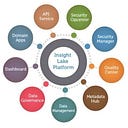GenAI — RAG Evaluation Best Practices
Creating a robust evaluation framework for Retrieval Augmented Generation (RAG) systems is crucial for developing high-quality AI applications. Let’s dive into the key components of a comprehensive RAG evaluation framework and explore how to implement it effectively.
RAG Evaluation Framework Overview
A thorough RAG evaluation framework should assess both the retrieval and generation components of the system. Here’s a breakdown of the main elements:
- Retrieval Evaluation
- Answer Generation Evaluation
- Overall System Evaluation
- LLM as a Judge
- Evaluation Pipeline Implementation
- Production Release Process
1. Retrieval Evaluation
Retrieval metrics focus on assessing how well the system retrieves relevant information from the knowledge base. Key metrics include:
Context Precision
This metric measures the relevance of the retrieved context to the given query. It helps identify if the retrieval system is bringing in unnecessary or irrelevant information.
Context Recall
Context recall evaluates whether the retrieved information contains all the necessary details to answer the query completely. It ensures that critical information isn’t missed during retrieval.
NDCG (Normalized Discounted Cumulative Gain)
While not always applicable in RAG systems, NDCG can be useful when dealing with ranked retrieval results. It measures the quality of the ranking, giving more weight to highly relevant documents appearing earlier in the results.
2. Answer Generation Evaluation
These metrics assess the quality of the generated answers:
Faithfulness
Faithfulness measures how well the generated answer aligns with the retrieved context. It helps identify hallucinations or fabricated information not present in the context.
Answer Relevancy
This metric evaluates how well the generated answer addresses the original query. It ensures that the response is on-topic and provides valuable information to the user.
Coherence
While not always quantified, coherence assesses the logical flow and readability of the generated answer.
3. Overall System Evaluation
To get a holistic view of the RAG system’s performance, consider:
RAGAS Score
The RAGAS score is a composite metric that combines multiple individual metrics to provide an overall assessment of the RAG system’s performance.
Human Evaluation
While automated metrics are valuable, human evaluation remains crucial for assessing subjective aspects like answer quality, usefulness, and user satisfaction.
4. LLM as a Judge
Leveraging Language Models (LLMs) as judges for evaluation can be an effective approach, especially for scaling up the evaluation process. Here’s how it works:
- Prepare evaluation prompts that instruct the LLM on how to assess specific aspects of the RAG output.
- Provide the query, retrieved context, generated answer, and evaluation criteria to the LLM.
- The LLM analyzes the inputs and provides a structured evaluation based on the given criteria.
- Parse the LLM’s output to extract quantitative scores or qualitative feedback.
This approach can be particularly useful for assessing subjective qualities like coherence or helpfulness, complementing traditional automated metrics.
5. Evaluation Pipeline Implementation using RAGAS
RAGAS is a popular framework for evaluating RAG systems. Here’s an example of how to set up an evaluation pipeline using RAGAS:
import os
from datasets import load_dataset
from ragas import evaluate
from ragas.metrics import (
faithfulness,
answer_relevancy,
context_recall,
context_precision,
)
# Set up OpenAI API key (required for some RAGAS metrics)
os.environ["OPENAI_API_KEY"] = "your-api-key-here"
# Load your evaluation dataset
eval_dataset = load_dataset("your_dataset", split="test")
# Run the evaluation
result = evaluate(
eval_dataset,
metrics=[
context_precision,
context_recall,
faithfulness,
answer_relevancy,
]
)
# Print the results
print(result)
# Convert to pandas DataFrame for further analysis
df = result.to_pandas()
print(df.head())This pipeline evaluates your RAG system using four key metrics: context precision, context recall, faithfulness, and answer relevancy. The results can be easily analyzed and visualized using pandas.
6. Production Release Process
When preparing to release a new version of your RAG system to production, follow these steps:
Establish Baseline Performance:
- Evaluate the current production version on a comprehensive test set.
- Document performance across all relevant metrics.
Evaluate New Version:
- Run the new version through the same evaluation pipeline.
- Compare results against the baseline.
Conduct A/B Testing:
- If initial results are promising, set up an A/B test in a controlled environment.
- Monitor both versions on live traffic, focusing on key metrics and user feedback.
Analyze Results:
- Look for statistically significant improvements in critical metrics.
- Consider both automated metrics and human evaluation results.
Make Release Decision:
- If the new version shows clear improvements and no regressions, proceed with the release.
- If results are mixed, analyze trade-offs and consider further refinements.
Gradual Rollout:
- Implement a phased rollout, starting with a small percentage of traffic.
- Continuously monitor performance and user feedback during the rollout.
Post-Release Monitoring:
- Set up ongoing monitoring of key metrics in production.
- Establish alerts for any significant deviations from expected performance.
By following this structured approach to RAG evaluation and release management, you can ensure that each new version of your system brings measurable improvements and maintains high quality in production environments
About — The GenAI POD — GenAI Experts
GenAIPOD is a specialized consulting team of VerticalServe, helping clients with GenAI Architecture, Implementations etc.
VerticalServe Inc — Niche Cloud, Data & AI/ML Premier Consulting Company, Partnered with Google Cloud, Confluent, AWS, Azure…50+ Customers and many success stories..
Website: http://www.VerticalServe.com
Contact: contact@verticalserve.com
